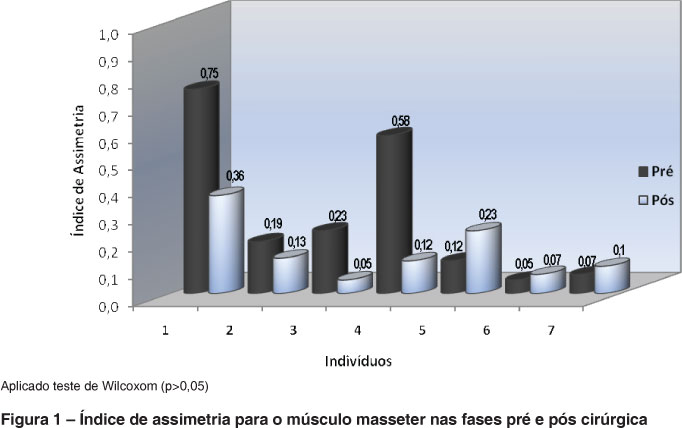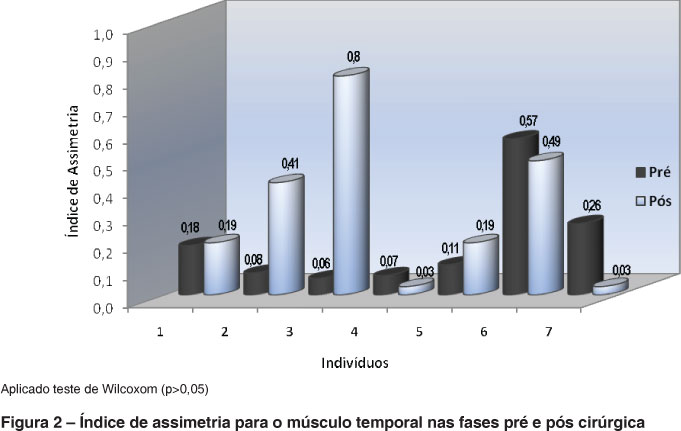PURPOSE: due to the presence of major masticatory dysfunction in patients with temporomandibular joint (TMJ) ankylosis, this study analyzed mouth opening and EMG activity of masticatory muscles in order to detect changes in these parameters after surgical release of mandible ankylosis. METHOD: in 7 patients with temporomandibular ankylosis, between 7 and 30 years (median = 9 years), the distance was measured as interincisal maximum active (DIMA) and we recorded the electromyographic activity (EMG) of masseter and temporal muscles during voluntary isometric contraction (VIC) and chewing, comparing the data before and after surgery using the Wilcoxon test. RESULTS: higher values were observed for DIMA after surgery (p=0.0277), the asymmetry index showed no difference between the two evaluated periods for both studied muscles, the values of the EMG during VIC decreased after surgery for the right (p=0.0179) and left (p=0.0179) masseter but not for the temporal muscle, there were no changes in EMG values for the studied muscles during mastication. CONCLUSION: the surgical release of TMJ ankylosis resulted in an increase of mouth opening and decreased amplitude of action potentials generated during maximum isometric voluntary contraction of the masseter muscle on both sides, this did not change the asymmetry index of the masseter and temporal as well as the electromyographic activity of the temporal muscle bilaterally during isometric contraction and masseter and temporal muscles during mastication.
Mastication; Temporomandibular Joint Disorders; Electromyography





